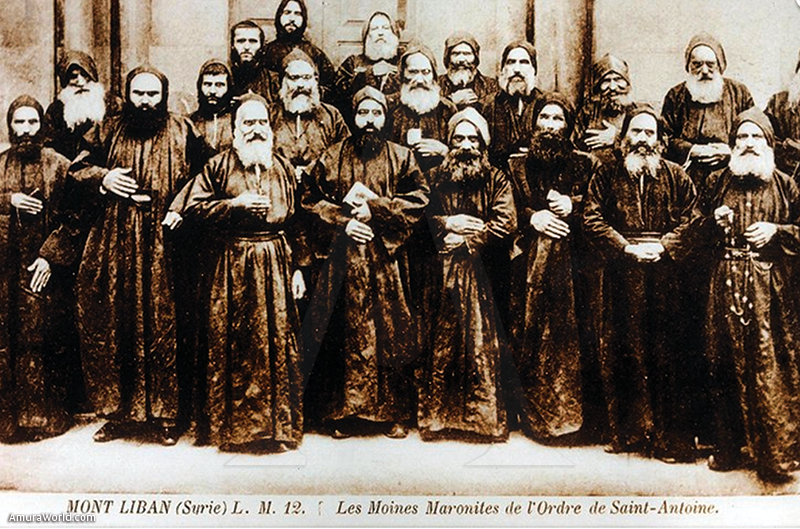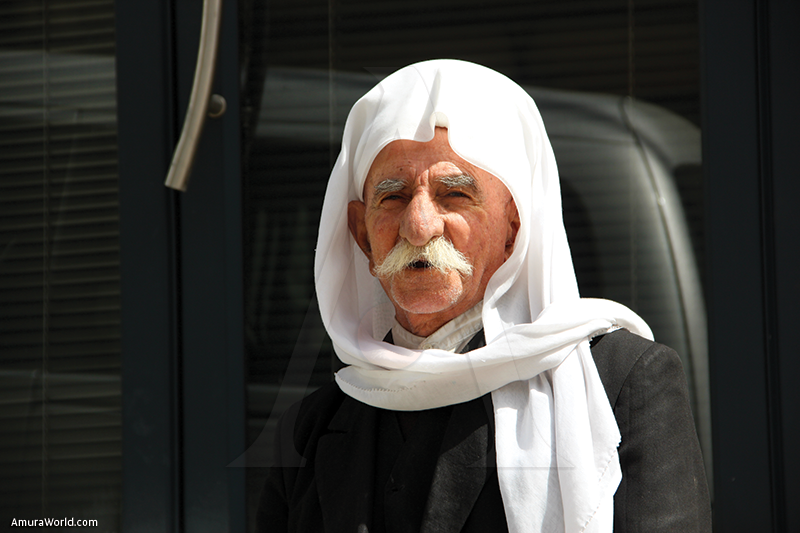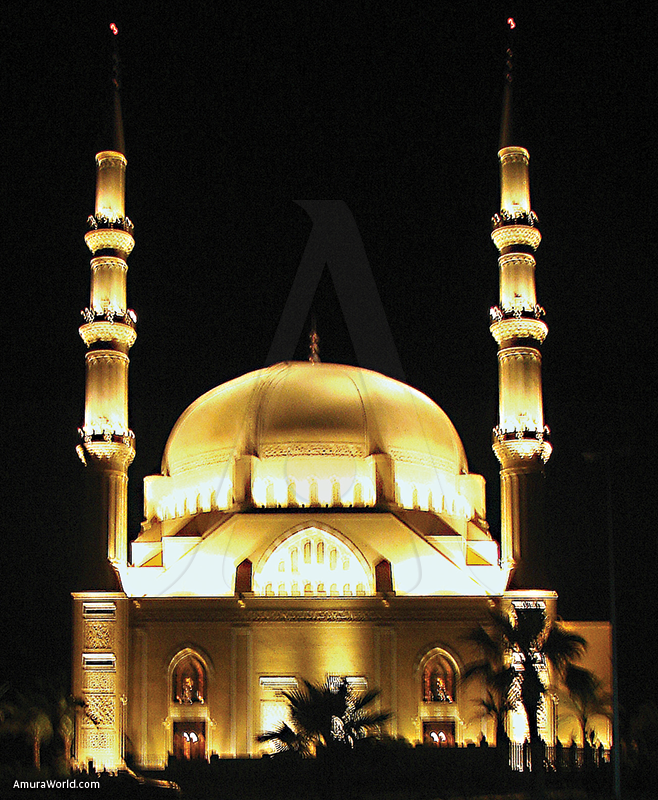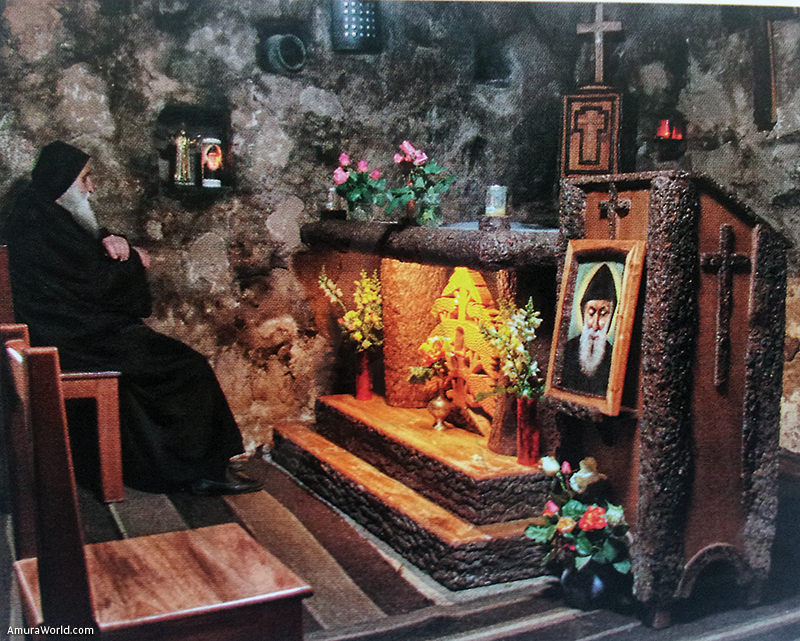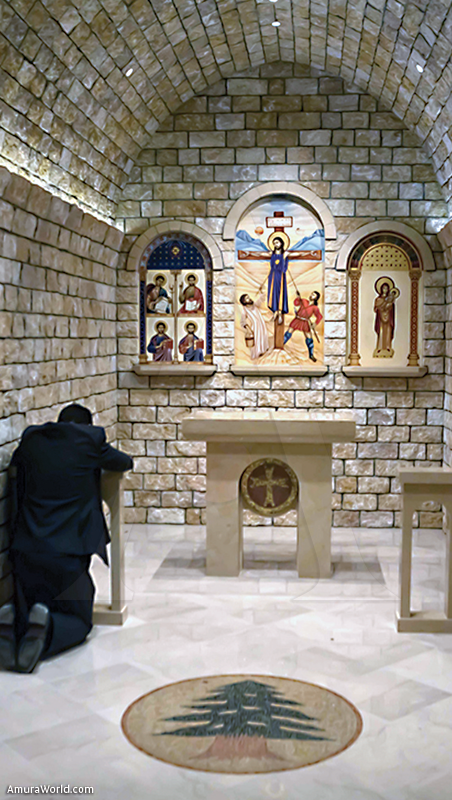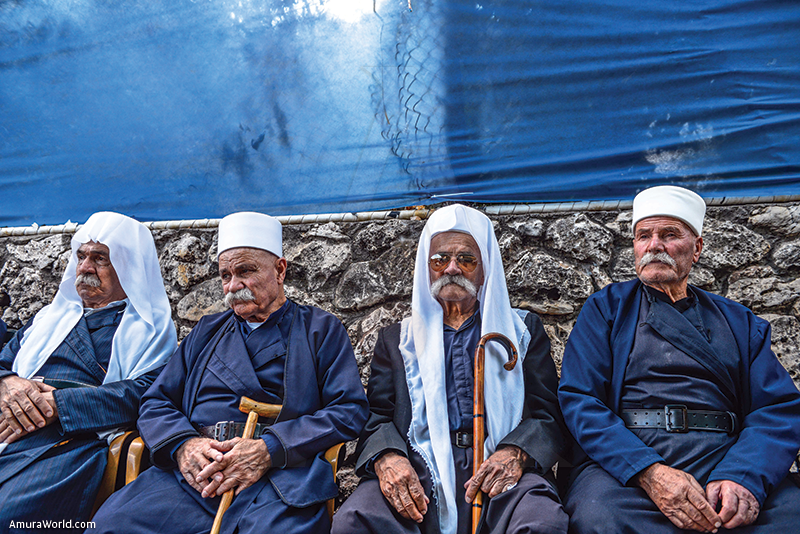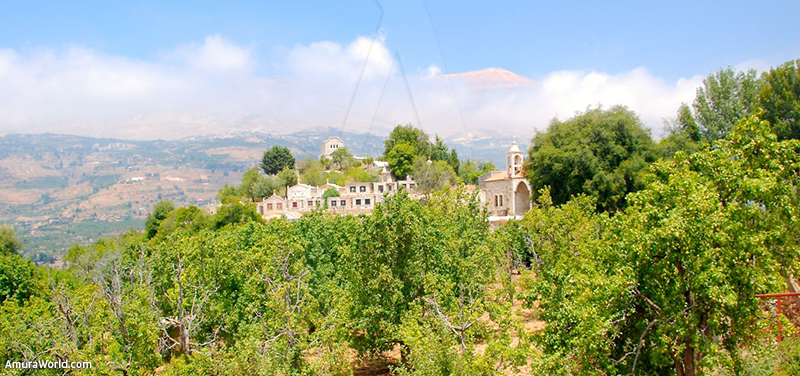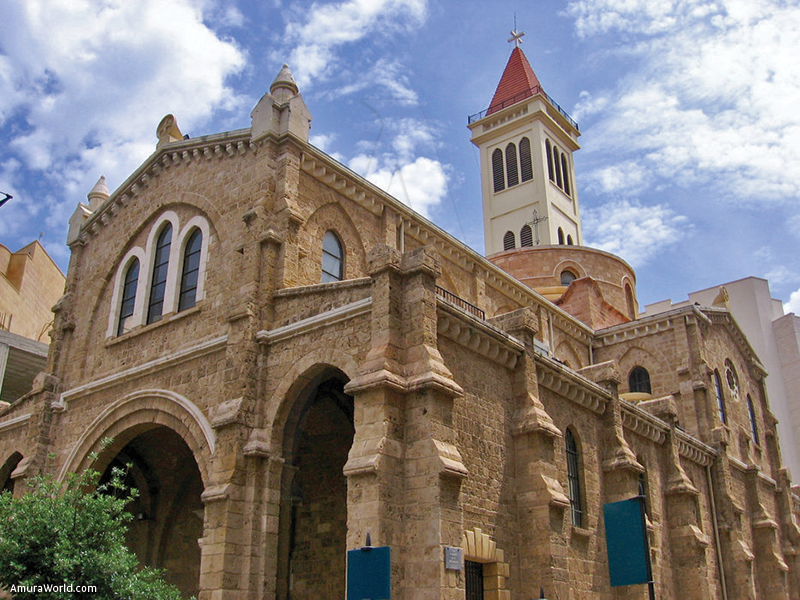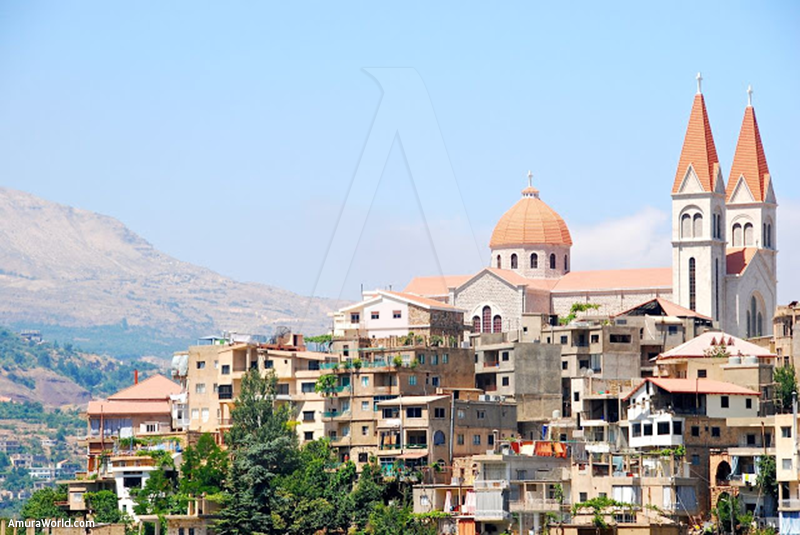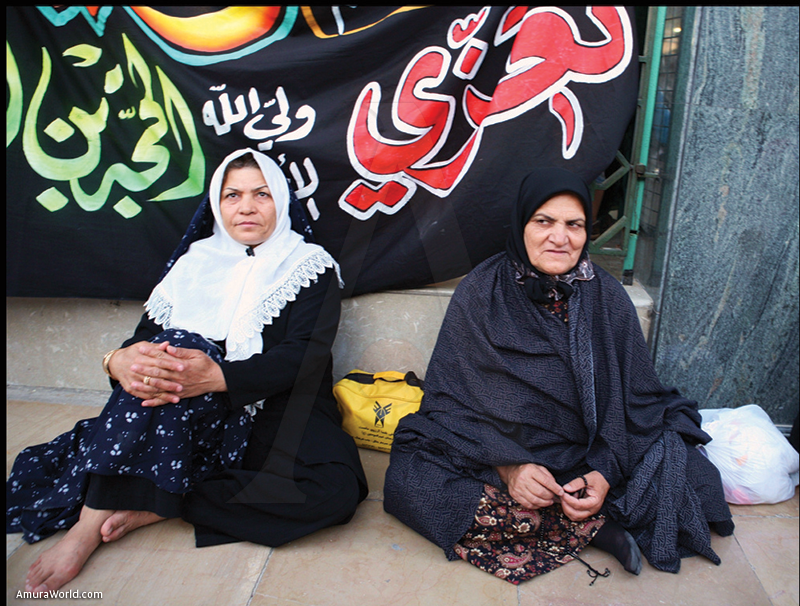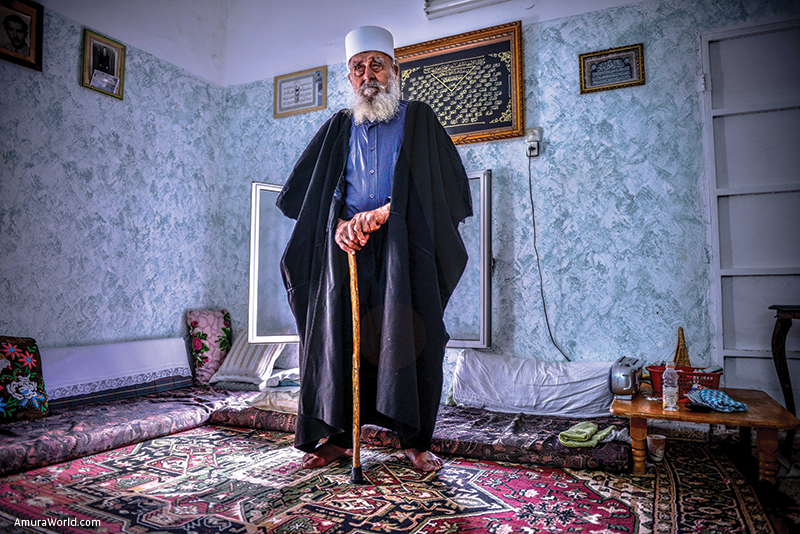Respect and tolerance of customs and religions
Without a doubt, one of the most ancient countries in the far orient, heir of the greatest part of the Phoenician territory, it limits to the north and east with Syria, to the south with Israel and to the west with the Mediterranean ocean.
For centuries Lebanon has been a country full of controversies, both political and religious, due to the diversity of different ethnics located amongst its territory.
I could speak about the political situation or the vast amount of beauty and natural richness, but no. Today, a stroll through the streets of Beirut, were different cultures create a human landscape, which made way to these columns, where I will briefly try to venture into its history through the ethnics that called my attention.
I shall begin with the Durūzī, whom today conform seven percent of Lebanese population and who, according to statistics, the majority of its integrants reside in Beirut.
The Durūzī emerged during the II century, when Al-Daraz and Hamzah Ibn-Ali arrived into Lebanese territory, its ideology coincides with the Islam, figure that was born from the Greek philosophy and other traditions, where the authorities of the sacred books are acknowledged, from the Torah to the Gospels and the Koran, but reject however that this last mentioned contains the definite dogma.
Durūzī are considered a monotheist and strict group, whom reject the idea of God having human attributes, they believe in reincarnation.
Something which caught my attention was the fact that one of the commandments of the Durūzī religion is to maintain hidden its dogmas and precepts, due to this reason very information regarding their raits exists.
Their population is divided amongst two groups, the ignorant of Yuhal and the espiritual, Uqal, only these last one are holders of the Durūzī theology.
Men and women alike may solicit to enter a Uqal circle, however, in order for this to happen the candidates must stand out for leading a highly moral life and spend a long period of probation, once admitted, they must always wear black clothes with a heavy white turban, in the case of men.
The Durūzī community has been isolated and for centuries their faith have been transmitted exclusively in the interior of families which have no probability of accepting converse.
Passing on with the Omeyas, a dynasty which developed during 661 y 750, beginning in Damascus and extending throughout the picturesque village of Besharre, which grant an easy access to the famous and impressive Lebanese cedars.
Under this dynasty architecture flourished, being the authors of one of the greatest mosques, such as the Mohammad Al-Amin, one of the symbols inside Beirut city, its brilliant brown exterior captivated me, owning a perfect contrast with the intense blue Lebanese sky vault.
Omeyas were also the creators of the foundation in Muslim civilization that derived in the development of theological and juridical sciences.
The Alauis ethnic also exists, called like this due to Ali, cousin and son-in-law of the prophet Mahoma, this religious current is considered a heterodox branch of the Chii Islam, do to the fact is believed that its descendants are the legitimate successors of Mahoma, however, some of their beliefs are in conflict with those of Islam.
The Alauitas correspond to approximately a 10% of the population in Lebanon, since the mid 70´s these minority has occupied the main positions of power.
Muslim considere this ethnic heretic, since inside their beliefs we can find, to mention an example, reincarnation, the celebration of Christmas and the consecration of wine, amongst others.
The community is divided between the initiated and the profane, with exclusion of women, since it is believed women do not have souls.
One of the principal beliefs of the Alaui which I found most surprising was the thought of all human beings as stars of light who should reincarnate seven times before returning to the sky, if they are sinners they shall reincarnate as Christians until their complete expiation, they amongst them, it is also believed that the unfaithful shall reincarnate as animals. These beliefs are based in their holy book “Kitab – Al Majmu”.
Another curious fact is that the Alauitas do not speak of their religious beliefs with any visitor, in fact, an individual of the minority does not know the teaching of his group.
The Fatimies, who appeared in Lebanon circa 980, were proud of their brutality. The name Fatamie comes from the Mohama. who belong to the Ismaili current, inside the Islamic branch of the Chiis, unlike others, the rise in Fatimi State charges depend on the merit rather than the lineage. The empire grew and flourished under the command of Califa Al-Hakin, however, the Califa gradually became insane to the degree of executing any who degraded them and created arbitrary laws such as the prohibition of work being realized during the day, or sleeping during the night, he ended the tolerance of towards Jews and Christians, who he forced to dress with identificatory clothes.
Now the turn of the Chii. Up to date they create the thirty percent of the population in Lebanon, just like other religions their origin is founded in Ali, cousin and Son-in-law of Mohoma, they consider their descendants the true magnets of the Muslim tradition.
The doctrinal peculiarities of this ethnic are that God does not allow men to walk into their perdition, because of this, he sent the prophets to guide them, who must own several characteristics that make the man perfect, besides, by having certain supernatural investiture granted by God, the Chii consider the Koran to have a literal or esoteric massage, this religious syncretism contrasts with the religious idea of the majority Islam of maintaining its original and pure form. Without mixing ideologies or beliefs.
Maronite Christians
During the VII century, the Maronite, to escape oppression from the Arab conquerors, refuged in the mountains and valleys of Lebanon, where several Maronite churches were created under the leadership of Saint Maron, known by the first pope as Maronite patriarch of Lebanon, the Maronite found a land of freedom and at all time defended their land with bravery, blood and heroism.
The Maronite are conscious they aren’t the only owners of the cedar land, because of this, they always extend their arms and open their heart to inhabitants and visitors of the Lebanese territory, unlike other ethnics I had spoken of before.
This beautiful trip throughout this country concludes, not without mentioning that Lebanon houses in its borderlines wonderful stories of incalculable valor, legend says Adam and Abraham inhabited “Baalbeck” when it was only an oasis surrounded by cedars.
“Although the storm may last, the sun always shines once more amongst the clouds”.
Khalil Gibran (1883-1931)
Philosopher and Lebanese poet.
Communities of the Lebanese Confessional Fan
Christian Communities
Catholic Maronites
Greco - orthodox
Greco - Melkite Catholics
Armenian Orthodox
Armenian Catholics
Syriac Orthodox Druze
Syriac Catholics
Nestorians ( Assyrians )
Chaldeans
Latino Catholics
Evangelicals
Copts
Muslim Communities
Shiites
Sunni
Alawites
Ishmaelites
Other Communities
Jews
Atheists
The Orthodox Church of Antioch
The origin of the Holy Eastern Orthodox Catholic and Apostolic Church, commonly called ‘Orthodox Church’, is found in the principles of Christianity itself. More than any other, it has preserved the ancient Christian traditions of the land where the religion of Jesus was first preached. It is dependent on the Greek Orthodox Patriarch of Antioch and All the East Orthodox, currently S. B. Ignatius IV Hazim.
The Melkite Greek Catholic rite
Melkite is a term was applied to Christians who rejected the Council of Chalcedon ( year 451 ) , who had condemned Monophysitism. They were established as an independent church in the vicinity of the headquarters of Antioch ( Syrian Orthodox or Jacobite ) and Alexandria ( Coptic ) , Christians faithful to the council during the sixth century. By rejecting the Council, they also refused Byzantine rule and emphasized the cultural and linguistic aspect of the religion ( Syriac and Coptic ). The Chalcedonian received from them the name of Melkite, imperials (malko Syriac, (king, emperor), or followers of the Byzantine Emperor, symbol of the orthodoxy in Chalcedon.
Melkite Greek Catholics adopted the Byzantine rite, first in Syriac, Greek and then finally mainly in Arabic. Currently, the term refers specifically to the Melkite Catholic branch of this church, the result of a spin around a patriarchal election of 1724 .
Melkite Greek Catholic Church has about 2 million member . Their patriarch is S. B. Lutfi Laham Gregory III , who holds the title of Patriarch of Antioch and All the East , of Alexandria and Jerusalem. Churches Orthodox Greek Catholic Melkite , have the same liturgy. Only the Melkite Catholics recognize the Pope’s authority, while the Orthodox don’t.
The Islam
Sunni Muslims
The trunk of this Muslim religion is Ahl as - Sunna wa l - Jama’a , or the People of the Sunna and its Community.Gravita Imama, the belief that says that Allah sent prophets and imams (magnets) appointed infallible in every time, with a special position to the twelve Imams of Ahl al- Bayt (People of the House). This groups beliefs crystallized after he hid the twelfth Imam. Muslim scholars of the Ahl al- bid’a are considered as People of Innovation.
Most scholars of Ahl as - Sunna , as Shiite scholars , believe that there a mahdab law school or more. The madāhib , are the current interpretation of Islamic jurisprudence. The discord between them and the upper Muslim core is one of belief, not of law, for them, those who worship the Imam has accepted acts of worship , otherwise it is partial faith and doubtful worship. For a Sunni this is heretical .
90% of the world’s Muslims are Sunni and they all believe in the authenticity of Al Qur’an (The Koran) , its text safeguard any addition or omission. The Koran must be believed in harmony with what is written in Arabic, distrusting translations not accepted by the authorities, since it generally changes their meaning. Each word was given by Allah (God) through the Archangel Gabriel. The Koran is eternal , it is the Truth, the seed of the believers, faith, rites and rules of behavior.
Sunnis believe in Allah as the only God. There are no middlemen with him. Allah has control over what is good or bad. All beings depend on Allah and need of his favor and mercy.
Shia Muslims
The word derives from the word Shi’ism chī’at ‘ Alī , which refers to the side of Ali, cousin and son in law of the Prophet. When Muhammad died (632 d . C.), no one foresaw who would apply for a succession. They chose the method of voting on candidates, choosing between the main characters. Some were in favor of Ali , assuming that he was the only real heir and for being the most attached to Muhammad, other notable denying the possibility of being the caliph or successor to Muhammad, liked Abu Bakr al- Siddiq , father of the Prophet, naming himself Khalifat Rasul Allah (successor of the messenger of the God), a term derived from the title of caliph.
Another choice was Umar I, the second caliph during the year 634. Before he died, Abu Bakr appointed him his heir and the men mentioned complied to these orders. The third was Uthman ibn Affan, also son of Mohammed, who emerged from the first group to convert; by the time of the death of Caliph Umar I in 644, elected for six high personages , he was chosen from among the companions of Muhammad.
When I die Umar , Ali was elected as caliph. But he was said to be a conspirator in the death of his predecessor and his right was challenged by Muawiyah, governor of Syria and member of the Umayyad family, thereby a cruel war between the two fractions begun. Both agreed that the battlefield was to be Siffin (in the middle Euphrates in Syria ) to resolve disputes between the people of Ali Ibn Abi Talib , the fourth caliph of Islam , and followers of the Syrian governor, Muawiya bin Abi Sufyan, the Muslims split into three communities: the Sunni, the Shia and the Alawite whose conflict framed Al- Fitna Al Kubra and great civil war, with the verdict of a neutral judge. Followers of Ali came into another group of disagreements with the ruling of the Kharijites and killed Ali during the year 661, trying in vain to also kill Muawiya and the judge.
The followers of Ali Hassan bet on his son who rejected the position, and then by Hussain, who promote an insurrection against the Umayyads. His death by decapitation took place in the city of Karbala (Iraq) in 680 , his body was buried in the same place and the head was left to the Caliph in Damascus.
The shocking death of Hussain convulsed much of the Muslims and brought them the decision to seek the honest and reverent basic roots of Islam. Hussain ‘s sacrifice is the foundation of Shi’ism, which alludes marches every year with flagellate, and its allegory in battle against illegality.
The Ismaili
The Ismailis or septimans support seven magnets. The sense of the legacy of Ja’afar al Sadik was the point of disunity between magnets and septimans. In the seventh century, followers of the magnet Ishmael, who was refused by a magnet of younger age, divided by saying that the magnet had an inner light that grants him infallible divine status.
The Alawites
The Alawites are dissent of Shi’ism in the ninth century. They believe in the divinity of Ali and rituals are not disclosed. Some are on the coast of Syria and northern Lebanon. When other groups were under pressure, they assumed the taqiya Ketman or a pretense of religion.
The Druzes
Islam, like Christianity, has had since its inception serious splits. The first was given to the group that would be called Chia ( Shiites ), then the Ismailis, nuclei opposed by Sunnis , who make up a majority of the Muslim Arab world. Following the example of Christians who took refuge in the heights fleeing persecution, especially from the Jacobites, Monophysite church members from Syria, reorganized in the sixth century by James Baradai , who took their name. Dissident Druze Muslims were from one country to another looking for a land that harbored until they found in the mountainous region of southern Lebanon. The Druze were merged to gain control and visibility south of the mountain.
The word Druze comes from the name of the Persian thinker Muhammad Ben Ismail Al Darazi, secretary of the sixth Fatimid caliph in Cairo , Biamr Allah Al Hakim ( 977-1021 ). The Druze challenged this affiliation and rejected the teachings of the thinker, calling them outrageous . They preferred to be called Unionists, believers of one God who incarnated in certain men, of which the base would be the Caliph Al Hakim Allah Biamr. Explaining the various incarnations that God establishes, through them, a direct relationship with men. According to their beliefs , God has incarnated more than ten times, but the incarnation which took place in the Caliph Al Hakim Allah Biamr was the most perfec . This caliph began his duties at the age of 11 years and held the post for 18 more, until he was killed by a conspiracy hatched by those who disapproved of their conduct. The Druze, however, cast doubt on his death . They claim that he disappeared voluntarily but will return in the time chosen by the aura for a triumphant glory.
Text: Archivo Libanés / Lourdes Brozon ± Photo: Worldpress / THE TOWE / sxc / ADIESR / james gordon

